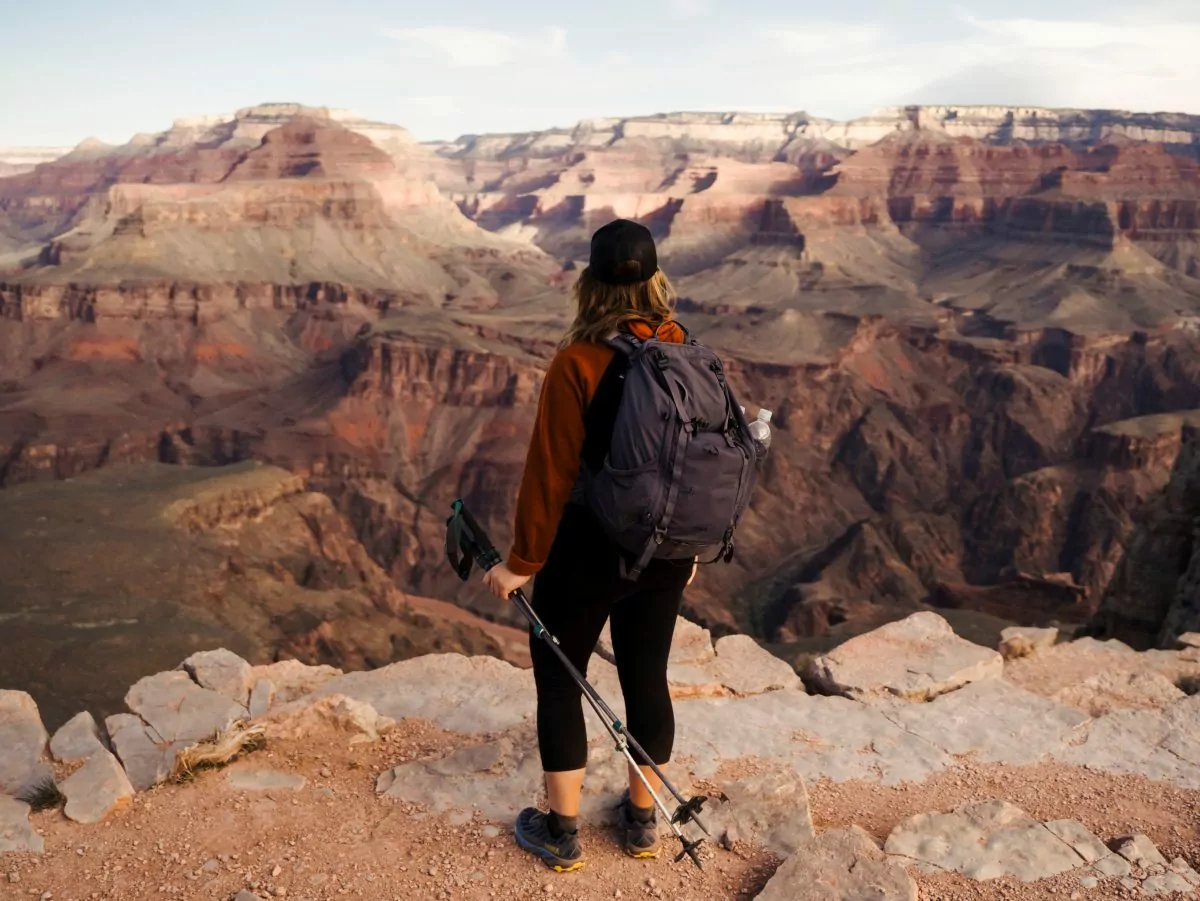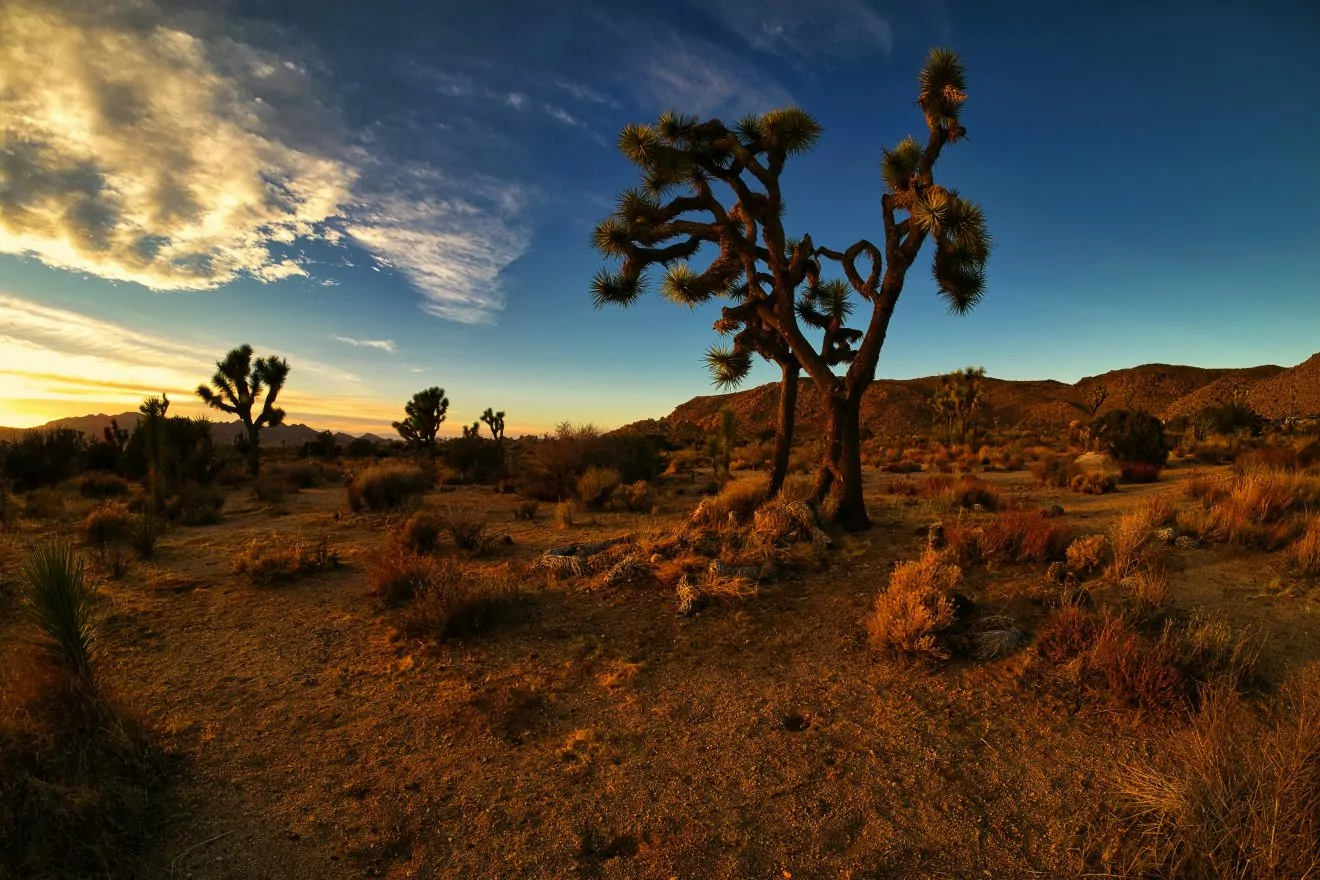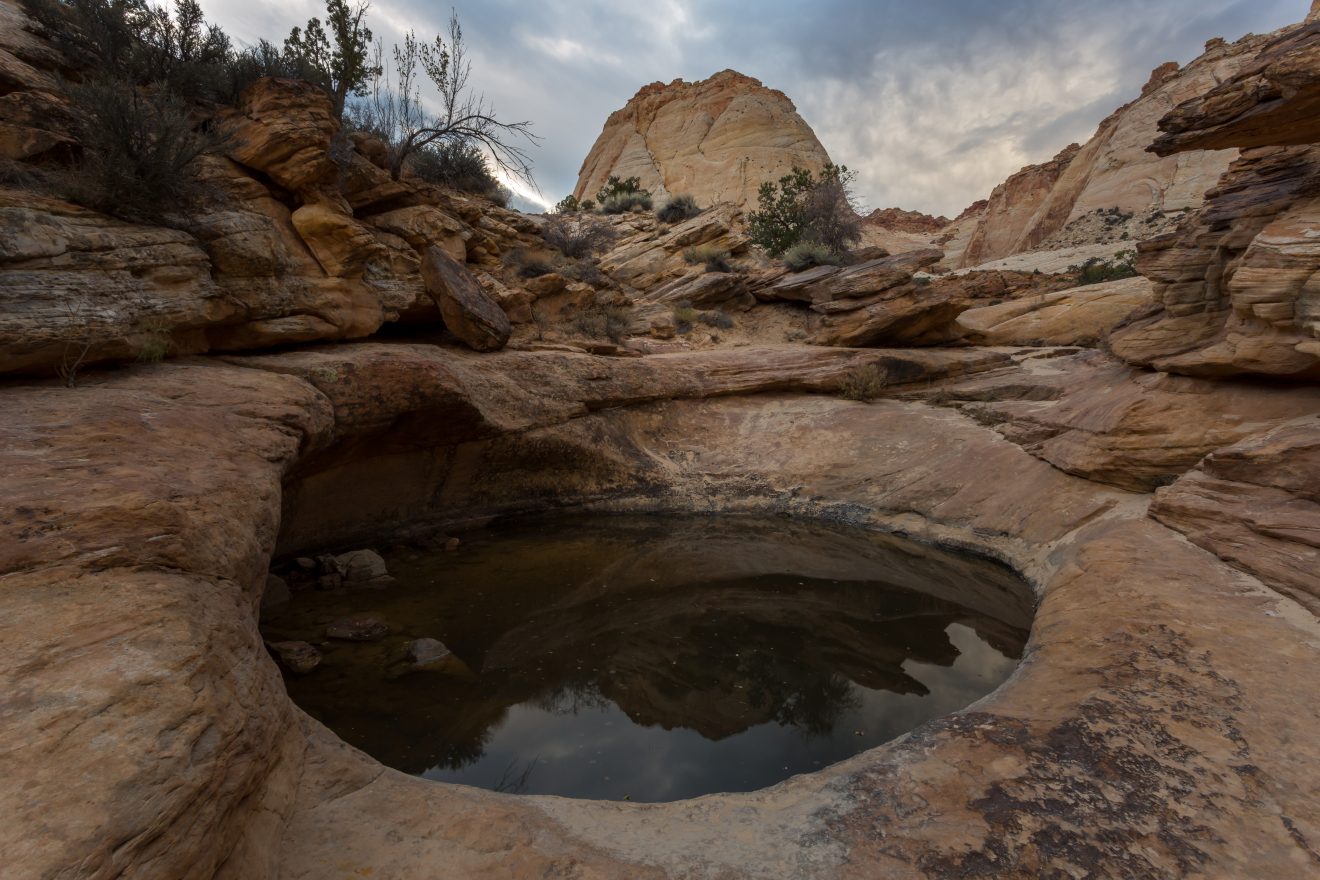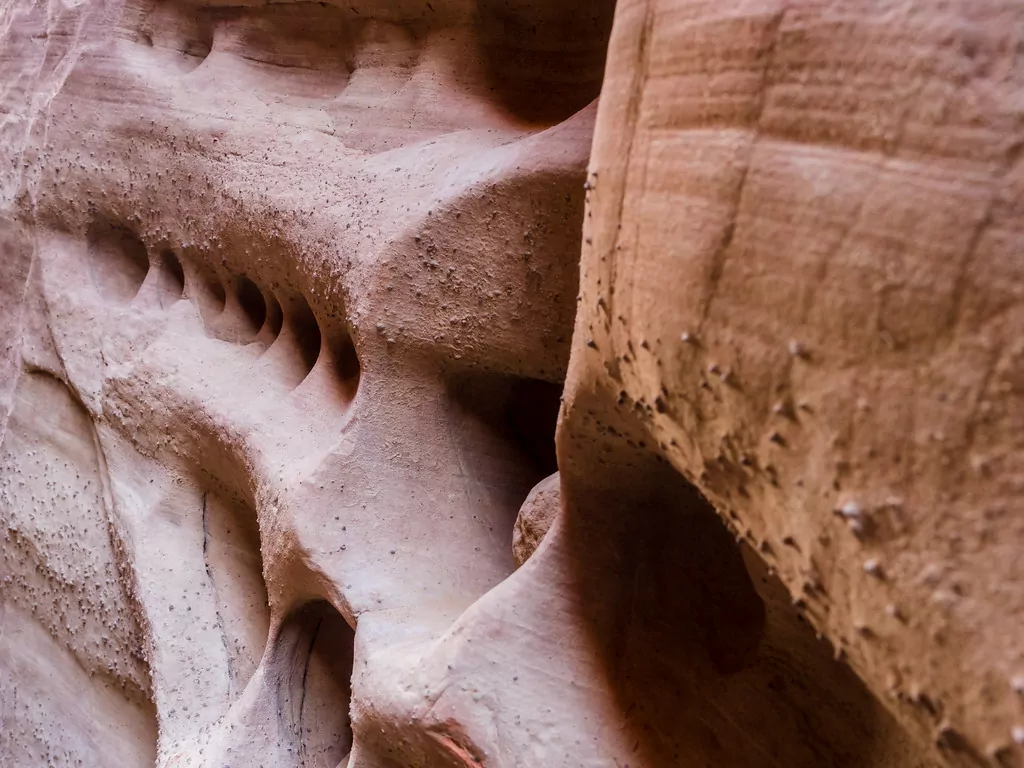How to Hike in the Desert

Photo by Diego Lozano on Unsplash
The desert is a revered and intimidating landscape. Beautifully austere at best and highly cruel at worst, even experienced hikers can be thrown off guard by its volatility. Often, temperatures reach well into the 100s. When the rain does fall, a gaunt layer of soil channels excess water into turbulent floods. But, catch the desert at golden hour and watch the wildlife emerge — it’s a magical experience that anyone can enjoy with a little preparation.
Each desert ecosystem — from the Colorado Plateau of Utah to the Sonoran Desert of Arizona — has unique characteristics. However, the same general recreation guidelines apply. Read our tips below for how to hike in the desert so you can have a safe and enjoyable trip to these stark, wild landscapes.
Explore Your World with Award Winning Guides
1. Start Early or Late

Photo by Simon Hurry on Unsplash
Many native desert animals are nocturnal for good reason. In the summer, midday temperatures reach well over 100 degrees, and most deserts offer few shady respites. It’s best to avoid hiking between 10:00 AM and 4:00 PM, so start your activities early or just go out for an evening walk. The desert glows at these times of day, so you won’t regret setting off at odd hours — just be sure to bring a headlamp.
2. Fuel Properly
We’ve heard it so many times: drink plenty of water when recreating outdoors. But adequate H2O is especially critical in the desert, where violent sunshine and soaring temps can dehydrate you well before you realize it. A gallon a day is the standard recommendation, but when you’re hiking in the desert, you’ll want to bump it up to a liter every hour and sip before you get thirsty.
Don’t forget to track what comes out of your body, either. Infrequent or dark urine is a definite sign of dehydration and can be followed by serious neurological conditions such as confusion and dizziness.
In desert environments, it’s difficult to replace the extra fluids and minerals you sweat, so water alone won’t always cut it. Sports drinks or tablets will replenish your essential electrolytes. If you prefer to keep it simple, salty snacks high in sodium are another good supplement — but they’re far less concentrated than packaged electrolyte mixes, so snack often. Staying fueled will help prevent hyponatremia, a less common but still dangerous illness that occurs when a hiker drinks so much water that it dilutes the sodium in their body and overwhelms their kidneys.
Some extra advice: While you’re packing water, be sure to leave some in the car. For desert dwellers, in-car water storage is an essential precaution in the event of car issues. Plus, it’s always a good idea to have some waiting at the trailhead if you underestimate your hike.
3. Dress Like a Local
Sun shirts and big hats are the name of the game in the desert. Sunscreen is a great start but it’s easy to forget to reapply, so it’s best to have a guaranteed layer of protection when hiking in the desert.
It seems counterintuitive to wear more clothing in hotter climates, but lightweight sun shirts provide extra SPF protection and actually keep you cooler by hiding your skin from the hot sun. And while wide-brimmed hats may seem dorky, they cover overlooked areas like your scalp, lips, and ears.
Footwear is the one clothing exception where less is more. Some people love boots and some people hate them, but there’s no denying that they make your feet sweat. Opt for more breathable footwear (like trail runners, lightweight boots, or even sandals) when hiking in the desert. You’ll sweat less and your feet — and your friends at camp — will thank you. If you’re ready to switch to minimal footwear, Chacos and Bedrock Sandals are known for their comfort and traction. If you’d rather keep the ankle support, Keen and Ahnu have some great breathable boot options.
It’s important to dress for the weather at hand but it’s also critical to be prepared for unexpected changes. Despite what it may seem, it actually does rain in the desert, and when it comes, it often comes with force. Always pack a rain jacket or emergency poncho so you’re not caught unprepared if the weather takes a turn.
4. Know Your Water Sources

For a place fundamentally shaped by water, the desert hides it well. If you’re planning to hike in the desert, consult maps and local ranger stations to find out about current water conditions and potential sources.
Desert streams are often vibrant places, but few are perennial and it’s common to encounter dry water sources. If you’re seeking out a water supply, look for cottonwood trees. They’re enormous poplars that grow near water and are a good indication of possible streams. Tinajas, or potholes, are deep depressions in hard rock that hold onto water for extended periods of time, especially in shady canyons or after recent rain. Don’t rely on them for water, but they can be a lifesaver in an emergency.
5. Familiarize Yourself with Flash Floods and Storms
Many people visit the desert at the most brutal time of year because it aligns with school vacations. Summer is also the monsoon season, and visitors are most at risk of getting caught in a storm during these months. Storms usually sweep in in the afternoon and create beautiful waterfalls and rainbows, but they also bring massive flash floods. Know the risks before setting out on rainy days and check the forecast.
Flash floods are even more dangerous than they sound because they’re not just water. These torrents of rainfall carry sediment, logs, rocks, and other heavy debris. The most recent floods in Zion National Park even took out cars and RVs! Flash floods travel through a complex network of drainages that extend for many miles, depending on where the rain falls. Some drainages are safer than others. Locals can tell you which hikes are safest if the weather looks questionable, so stop by a ranger station or gear shop before your hike! But, it’s always safest to rearrange plans when clouds start to build, no matter how far away they appear.
In addition to rain, thunderstorms in the desert pose a serious risk to hikers. Avoid open landscapes during thunderstorms, even if the storm isn’t immediately above you — lightning can travel for over 10 miles. Desert plants are usually small, so you may very well be the tallest thing in the landscape, making you the most at risk of lightning strikes.
6. Pack It In, Pack It Out
In most places, an orange peel takes around six months to decompose. But in arid desert environments, it can last indefinitely. Leaving any nonnative materials is littering, even if they’re technically biodegradable in different climates. Many trailheads do not have trash cans, so bring a small bag for wrappers and other waste. Never throw it in the privy at the trailhead!
In such slow-to-decompose environments, it’s best practice to pack out all bathroom materials as well. Some desert parks and counties, such as Canyonlands National Park, require that all backpackers carry wag bags. There isn’t enough rainfall or organic matter in desert soil to decompose human waste, and the amount of feces can become a problem in areas that receive high visitation. At a minimum, always pack out your toilet paper, even when steering away from popular desert hikes. Nothing ruins a hike like old toilet paper billowing in the sagebrush.
7. Consider a Medical Course
Wilderness First Aid (WFA) or Wilderness First Responder (WFR) courses are an excellent way to learn the symptoms of heat-related illnesses — and it doesn’t hurt to be ready for blisters and snake encounters either. Even the most diligent, cautious hikers can find a disoriented traveller who didn’t drink enough water. Carrying extra snacks, a packet of powdered Pedialyte, and a satellite phone could save someone’s life.
Medical courses can be cost-prohibitive, but luckily, the internet is full of resources. The American Hiking Association published helpful guides to dehydration, heat exhaustion and heat stroke. While you’re at it, read up on desert wildlife like scorpions, spiders, and mountain lions. Heat illnesses and dangerous wildlife encounters are avoidable, and Search and Rescue operations are expensive, so don’t let yourself become a victim of the desert environment.
Guided Desert Hiking Excursion

If you’re not ready to brave the desert on your own, a guided desert backpacking trip allows you to learn essential skills for desert hiking. When you hike with a guide into the weaving canyons of Capitol Reef National Park or the striated desert of Death Valley, you’ll learn how to identify potential water sources and stay safe in scorching temps. Not only will you gain new skills, but hiking with a guide can teach you about the subtle wildlife, past & present cultures, and fascinating geologic formations. The more you know about the region you’re hiking, the more you’ll appreciate these strange, seemingly sparse landscapes.




